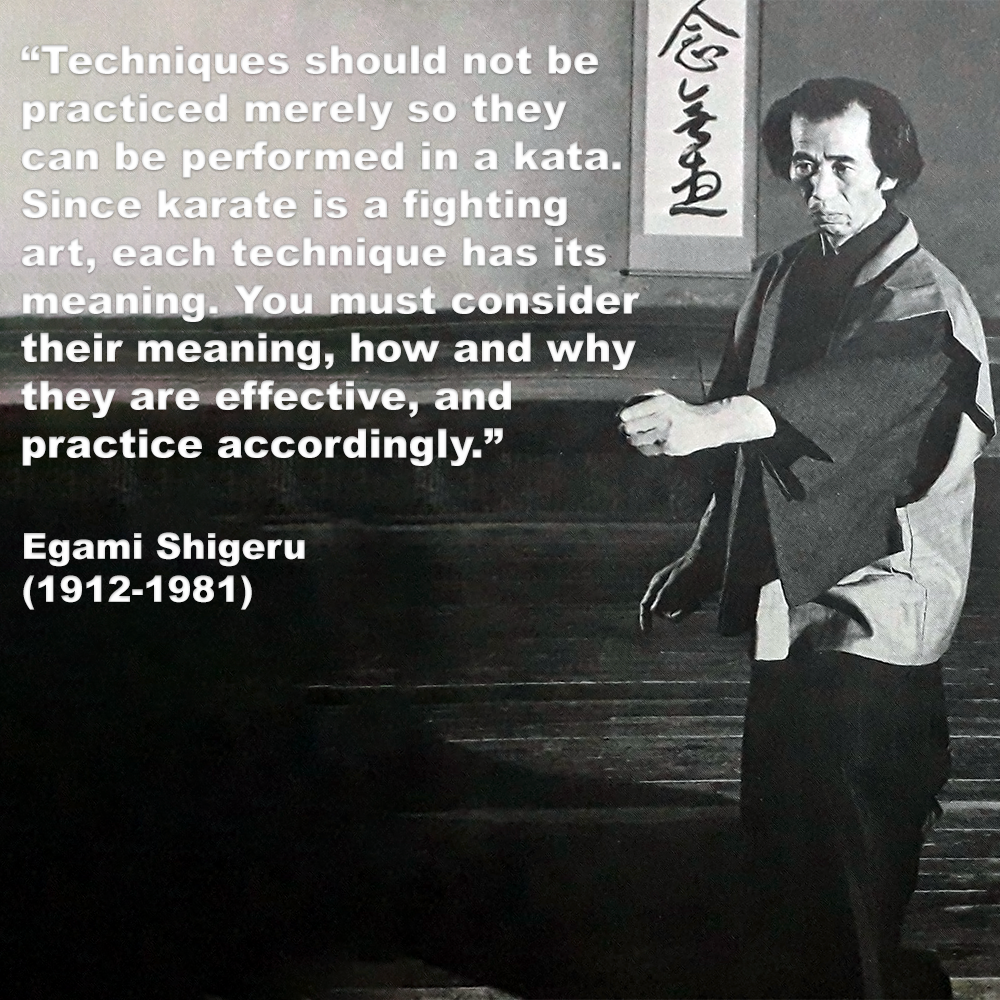
Kata is a fundamental component of traditional martial arts.
.
However, in recent years, there has been a growing trend among some practitioners to ignore kata, or at least consider it of low importance compared to other aspects of the art.
.
It is my belief that this trend is due to several reasons, which includes the limitations of some instructors knowledge, the lack of practical application, and the evolution of the martial arts.
.
Many practitioners question the practical application of kata in real-life situations. They believe that while kata can be useful for developing basic techniques, it does not simulate the unpredictable nature of a real fight. One of the reasons given is that In a real-world scenario, an opponent is unlikely to follow a predetermined sequence of techniques, making kata training less effective in preparing for real-life situations.
.
The problem with this way of thinking is that the understanding of kata is just plainly wrong. Many practitioners, and instructors, view the movements in kata as just a series of techniques, one after the other, each of which are given a name and then that technique and sequence is followed to the letter.
.
Firstly, when you give something a label your interest can end in exploring a connection with anything other than that label. Labels end up conveying something absolute. That’s difficult to navigate away from once it’s decided.
.
Secondly, it is the ‘whole’ movement that defines it usage, from beginning to end, as a principle, not just a technique. The beginning of the movement is frequently more important and is often ignored or not even considered.
.
For many, kata being a stylized form performed alone, without an opponent, it does not necessarily translate into real-world fighting scenarios for them, where an opponent may be unpredictable, and the environment may be chaotic.
.
However, if you view the kata as a complete system instead of individual techniques, the importance of following a sequence is less important. In effect being able to pick and chose the movements contained within the kata based upon the incoming stimuli. Much more realistic.
.
Over time kata has drifted away from being viewed as a record of highly-potent fighting methods, to instead being generally considered as an aesthetic pursuit that has no relation to actual combat.
.
Some martial arts styles place too much emphasis on performing kata perfectly, which can lead to an over-reliance on single techniques rather than adaptive problem-solving skills.
.
In the past, kata was used as a way to preserve and pass down combat principles from generation to generation. However, with the advent of video recording technology and the ability to share information instantly over the internet, the need for kata as a preservation tool has diminished.
.
To practice karate as a pragmatic system, kata needs to be actively studied, with a partner, as opposed to just ‘practiced’ on its own. Numerous masters in the early part of the 20th century were very critical of practitioners who only emphasize the aesthetic performance of kata.
.
Without in-depth study of ‘bunkai’ and its applications, kata practice loses all meaning. After-all, kata were created to record fighting principles of an individual, not just to pass the next belt level.
.
“Techniques should not be practiced merely so they can be performed in a kata. Since karate is a fighting art, each technique has its meaning. You must consider their meaning, how and why they are effective, and practice accordingly.” – Egami Shigeru (1912-1981)
.
.
With thanks to Iain Abernethy.
.
